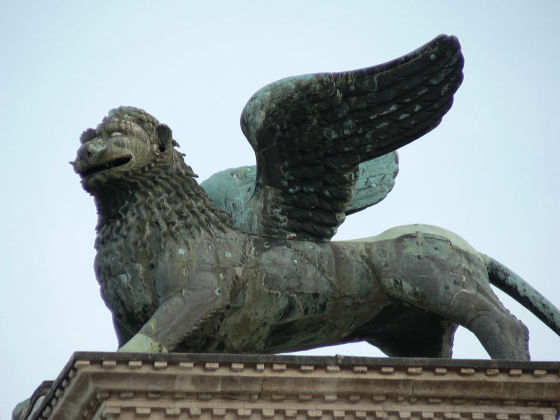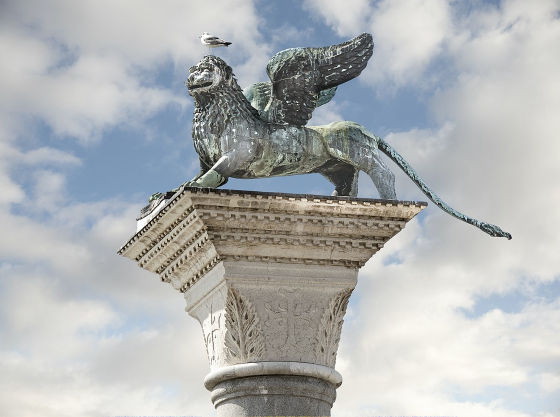The iconic bronze statue of Venice, the 'Lion of Venice,' may have been made in China during the Tang dynasty.

by Wikimedia Commons
The winged
The Chinese identity of St Mark's bronze 'Lion' and its place in the history of medieval Venice | Antiquity | Cambridge Core
https://www.cambridge.org/core/journals/antiquity/article/chinese-identity-of-st-marks-bronze-lion-and-its-place-in-the-history-of-medieval-venice/70176EBEF6C480FA4246DC2F189D1F9B

Iconic winged lion statue in Venice may actually be from China's Tang dynasty, study finds | Live Science
https://www.livescience.com/archaeology/iconic-winged-lion-statue-in-venice-may-actually-be-from-chinas-tang-dynasty-study-finds
The winged lion known as the 'Lion of Venice' is displayed on top of the Column of St. Mark and St. Teodoro in St. Mark's Square. St. Mark is the patron saint of Venice, and the winged lion representing St. Mark is also considered to be a symbol of Venice, and was featured on the flag of the Republic of Venice , which prospered through trade with the Eastern Mediterranean.
The Venetian Lion is believed to have been installed in the 1260s, and there are records of its restoration at the end of the 13th century. The style of the statue differs from other lion statues made in Europe between the 11th and 14th centuries, and it is thought to have been brought to Venice from elsewhere, but its exact origins remain unknown.
This is what the Venetian lion looks like.

by Wikimedia Commons
A research team from
Comparing the lead isotope ratio of the Venetian lion with a global database suggests that the bronze originated in the lower Yangtze River basin in China. This region in eastern China is home to large deposits of iron, copper, zinc, and gold, and artifacts from the Shang dynasty, which existed in China from the 16th to 11th centuries BC, also show the same lead isotope ratio as the Venetian lion.
The research team pointed out that the appearance of the Venetian lion shares some similarities with artwork from the Tang Dynasty, which existed from 618 to 907, particularly with the ' Zhenmushou' (Beasts Ensconced in Tomb) statues. These statues are often depicted as hybrid creatures with lion-like snouts and manes, pointed ears, horns, and wings, and the Venetian lion also shares similar characteristics. The Venetian lion's head also bears scars that resemble the removal of its horns.

by Wikimedia Commons
The research team believes that the lion of Venice may have been brought back from China by
They are believed to have traveled the Silk Road in the 13th century, establishing trading posts and eventually reaching Beijing, where they spent four years at the court of Kublai Khan , and it is thought that they may have come across a statue that matched the image of the winged lion, the symbol of the Republic of Venice.
Massimo Vidal, a co-author of the paper and an archaeologist at the University of Padua, said, 'Venice is a city full of mysteries, but one mystery has been solved: the Lion of St. Mark was born in China and traveled along the Silk Road.'

by Wikimedia Commons
Related Posts:
in Science, Posted by log1h_ik







